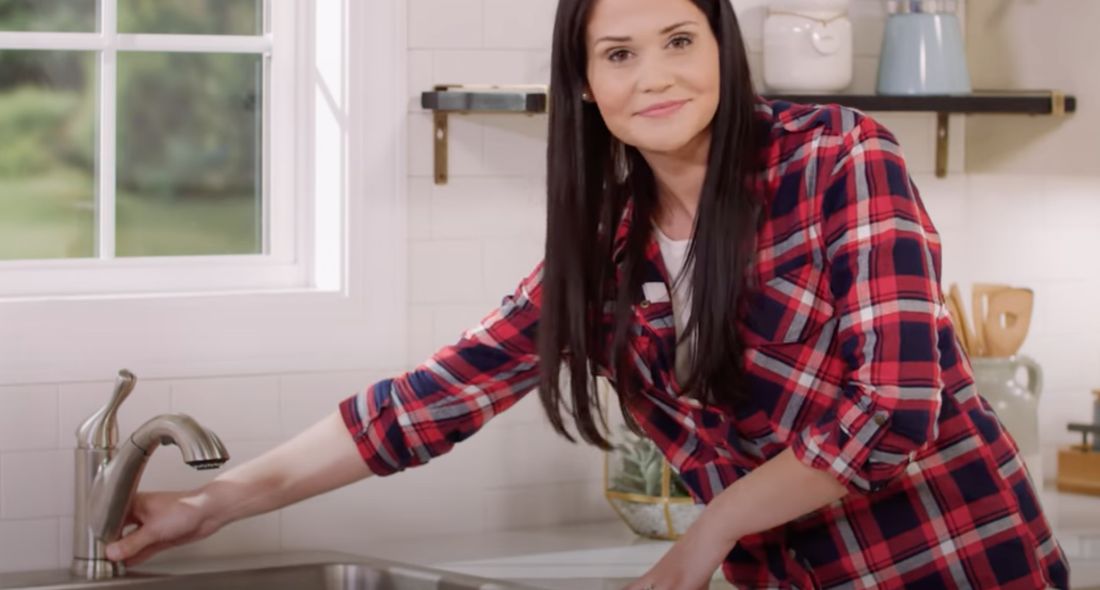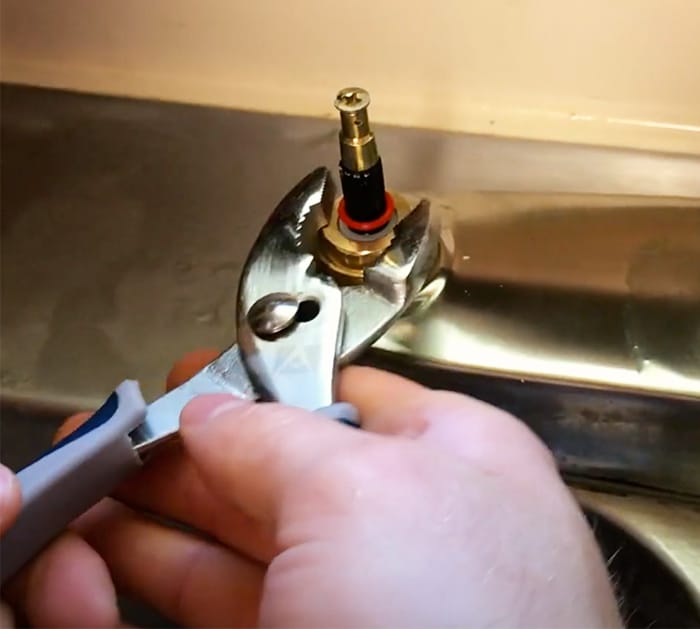What're your thoughts on Should I Repair or Replace a Leaky Faucet??

Trickling taps may feel like a minor hassle, yet their impact exceeds simply the aggravation of the sound. From wasting water to incurring unnecessary monetary expenses and wellness threats, ignoring a dripping faucet can result in different repercussions. In this article, we'll explore why it's important to resolve this usual household issue immediately and properly.
Wastefulness of Water
Ecological Effect
Leaking faucets contribute substantially to water waste. According to the Environmental Protection Agency (EPA), a solitary tap leaking at one drip per second can throw away greater than 3,000 gallons of water each year. This not only strains water sources however also influences environments and wildlife dependent on them.
Step-by-Step Overview to Repairing a Dripping Tap
Tools Called for
Before trying to repair a dripping tap, gather the needed devices, including a flexible wrench, screwdrivers, replacement components (such as washing machines or cartridges), and plumber's tape.
Common Tap Issues and Their Solutions
Recognize the sort of tap and the particular problem creating the drip. Common issues include damaged washing machines, rusty valve seats, or defective O-rings. Refer to maker guidelines or on-line tutorials for detailed support on repair services.
Financial Prices
Raised Water Costs
Past the ecological influence, trickling faucets can pump up water expenses significantly. The built up wastage over time translates into higher energy costs, which might have been avoided with prompt fixings.
Prospective Residential Or Commercial Property Damages
Additionally, extended dripping can cause damage to components and surfaces surrounding the tap. Water build-up can create staining, deterioration, and even architectural problems if left neglected, resulting in extra repair expenses.
Wellness Issues
Mold And Mildew and Mildew Growth
The constant existence of dampness from a dripping faucet produces an ideal environment for mold and mold growth. These fungi not only endanger indoor air high quality however likewise pose health and wellness dangers, especially for individuals with respiratory system conditions or allergies.
Waterborne Diseases
Stagnant water in dripping faucets can become a breeding place for microorganisms and other microorganisms, enhancing the risk of waterborne diseases. Impurities such as Legionella microorganisms prosper in stationary water, potentially leading to serious ailments when consumed or inhaled.
DIY vs. Specialist Repair work
Advantages and disadvantages of DIY Repair
While some might attempt to fix a trickling faucet themselves, do it yourself repair work feature their own collection of difficulties. Without correct understanding and devices, DIY efforts can exacerbate the concern or result in insufficient repairs, extending the trouble.
Benefits of Employing a Specialist Plumber
Hiring an expert plumber makes certain that the underlying cause of the leaking tap is resolved successfully. Plumbings have the knowledge and devices to detect and fix tap concerns successfully, conserving time and decreasing the threat of more damages.
Ecological Duty
Specific Payment to Conservation
Taking obligation for repairing dripping faucets lines up with broader efforts towards water preservation and environmental sustainability. Every individual's actions collectively make a significant influence on protecting precious sources.
Lasting Living Practices
By prioritizing prompt fixings and embracing water-saving habits, people contribute to lasting living practices that profit both present and future generations.
Safety nets
Routine Maintenance Tips
To avoid dripping taps, perform routine upkeep such as cleaning aerators, evaluating for leaks, and changing damaged parts quickly. Additionally, take into consideration mounting water-saving gadgets or updating to a lot more effective fixtures.
Value of Prompt Repairs
Attending to trickling taps as soon as they're discovered stops more water wastefulness and potential damage, ultimately saving both water and money over time.
Effect On Home Worth
Understanding of Well-Maintained Residential Property
Keeping a property in good condition, consisting of resolving upkeep problems like leaking faucets, enhances its perceived worth and charm among potential customers or occupants.
Influence on Resale Worth
Characteristics with properly maintained plumbing components, including taps, command higher resale worths in the realty market. Addressing leaking faucets can add to a positive impact during property examinations and negotiations.
Verdict
Addressing a leaking tap surpasses simple ease; it's an important action towards conserving water, minimizing economic costs, and protecting health and residential property. Whether via do it yourself repairs or specialist assistance, taking action to repair leaking faucets is a little yet impactful method to advertise accountable stewardship of sources and contribute to a much healthier, extra lasting future.
Why Are My Faucets Dripping (And Can I Fix it Myself)?
Causes of a Dripping or Leaking Faucet
Whether you’re hearing drops of water falling and hitting a sink, or noticing water ooze out from the base of the spout, you shouldn’t ignore a dripping or leaking faucet. And, the good news is, sometimes you can fix the problem yourself.
In this article, we’ll review a few common causes of dripping and leaky. We’ll also walk you through some basic ways to find the problem and handle it without calling anyone — and let you know when to call in a pro.
But, no matter what the cause, or whether you can handle it on your own, the sooner you address it, the better.
Each drip may be a tiny amount of water. But, they all add up quickly. According to the U.S. Geological Survey, one faucet losing one drop every 20 seconds — five a minute — wastes around a liter of water every day, and 173 gallons a year.
Add in more than one in your house, and it’s a lot of water to waste. So, we’ll help you get to the bottom of things quickly.
Four Reasons Your Faucet May Be Dripping
Aerator is Damaged or Unseated Valve Seat is Corroded O Ring is Loose or Worn Out Part of the Assembly is Loose Aerator is Damaged or Unseated
If you unscrew the end of your faucet, you’ll find the aerator. It’s the little stem piece with a screen on it that shuts off the water circulation.
If it’s damaged, or if it’s not sitting right, it will allow water to pass through.
Valve Seat is Corroded
Next is the valve seat, which is connected to the washer. If the washer wasn’t in place correctly, then it could have ground against the seat. Over time, this damages the valve seat.
The problem could also be corrosion: Over time, the part has worn out, and it’s now allowing water to pass through.
O Ring is Loose or Worn Out
Since the o ring is only a small rubber gasket, it’s a common reason why the faucet is dripping. You’ll find it at the base of the faucet, and it’s there to keep water from coming out where it’s not supposed to.
However, it’s common for the o ring to wear out over time. When it does, you’ll notice a drip.
Part of the Assembly is Loose
So far, we’ve looked at a few small, specific parts. But, the problem could be anywhere in the assembly if something’s out of place.
Even if a part isn’t damaged, over time, it may have become loose or dislodged. It could be the parts we mentioned, or the aerator at the tip of the faucet, the stem itself,
Can I Fix a Leaky Faucet Myself?
Depending on the problem, and how handy you are, there’s a chance you can fix a leaky faucet without calling a professional. But, you do run the risk of making the problem worse.
If it’s a small drip, you can certainly try a few troubleshooting tactics. We’ll walk you through them in a moment.
But, no matter what, your first step should be shutting off the water coming into the faucet. You should find a shutoff valve under the sink on the pipes leading to it. Turn each one clockwise until they close tightly.
Next, make sure you have the right tools for whatever you’re attempting. It’s tempting to make do with what you have. But, you need the right ones for a reason: You’re often dealing with small parts that can break if you handle them carelessly.
If you’re feeling confident, here are some places to start.
Items Near the Tip of the Faucet
A few of the parts we mentioned — particularly the valve seat and washer — are located at the tip of the faucet where the water comes out. They’re easy to access, making it a good place to start.
Check the O Ring
To check the o ring, you’ll need to take off the spout at the base. It’s easiest on kitchen sinks with long spouts, versus the smaller, bulkier base on most bathroom sinks.
Either way, this can be tricky, so do it carefully and don’t force anything. If it’s not coming right off, you’re much better off calling in a pro than possibly breaking something.
For a kitchen sink, there’s usually a nut or coupling assembly at the base of the spout. These often slide off easily without using any tools.
Once you’ve disassembled those parts, gently but forcefully twist off the spout.
Then, you can see the o rings. There should be two of the rubber gaskets on the base. If they look worn or damaged, replace them, and see if that solves the problem.

I found that review about Leaky Faucets: Why They Happen & What to Do About Them when doing a lookup on the web. Enjoyed reading our post? Please share it. Let someone else check it out. Thank-you for taking the time to read it.